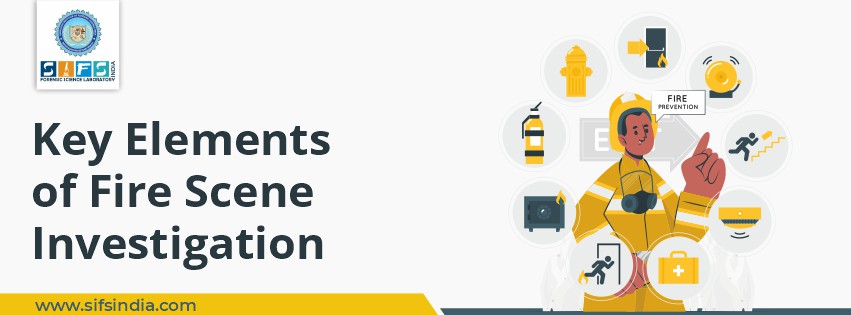Fire investigation involves the detailed examination of the fire scene once firefighters have extinguished the fire.
For effective results of fire scene investigation, investigators should scan the scene thoroughly and must have a detailed understanding of chemistry and behavior of fire and its effects.
The principal objectives are to determine the cause, origin and to identify the fuel and ignition sources.
Vehicle fire investigation is the primary aspect of the professional of fire analysis.
Fire investigators depend upon the patterns i.e. the geometric shapes and the effect of fire flames on the objects. Vehicles are one of the highest-priced assets and most people have with the exception of their houses.
To determine the seat of a fire is a key component of the investigation process, external examination of the vehicle may reveal the significant fire patterns.
In this blog post, we will learn in depth about the key elements of the fire scene investigation.
Fire Scene Investigation Steps
Step 1: Arrival at The Scene
While approaching the fire scene, first responders should observe the scene, note down the activities and initiate the documentation of the scene.
Step 2: Evaluating The Scene
The investigator is informed about the scene and the situations, and after evaluating all the facts he proceeds further.
Step 3: Documenting The Scene
After evaluating the scene, he or she must document the scene which involves taking physical notes, taking pictures of the scene, as well as taking videos.
Step 4: Processing The Evidence
Investigator identifies, collects, and preserves evidence, prevents contamination, package and transport evidence, and establishes and maintains the chain of custody.
Step 5: Completing The Investigation
This step includes releasing the scene and submitting reports to the appropriate database. Before they can release the scene, investigators must ensure that they have collected all possible evidence, documented the scene accurately, and removed all materials used as part of the investigation.
Fire Investigation Procedure in Premises/Property
The root cause analysis of fire investigation is to find the origin of the fire.
This location is also called as the “seat of the fire”. This point will be extremely damaged; destructed part in larger premises/property, the seat of the fire may be buried under the rubble because of intense structural damage.
Often, an investigator may find evidence that helps determine the root cause of a fire, such as a gas stove, candle, matches, accelerants, or malfunctioning electrical appliances or electrical wirings.
The effect of fire on various materials indicates the direction of fire, as the fire burns upward and outwards.
V- pattern or other burnt patterns are observed on surfaces adjacent to the fire.
Smoke/soot deposits also elaborate about the direction of fire in addition that glass and plastic tend to melt in the direction of fire.
Structural damage to the building/premises also gives an idea about the seat of the fire, the part of the building may collapse which was firstly weakened by the flames of fire.
There may be multiple points of fire, which indicates arson if the arsonist has started fires in numerous places.
However burning wallpaper, curtains or debris can also produce apparently distinct ignition points.
Due to the range of factors affecting the origin of a fire, it may not be possible to specify the exact point of ignition of a fire.
Electricity is the most common cause of accidental fire, overheating, overloading, mechanical damage, or manufacturing defects are the various reason for damage.
When the collected fire exhibits were examined microscopically bubbling was observed and depicted that the cause of the fire is due to a short circuit.
Arsonists also used some flammable liquids like petrol, kerosene, and turpentine, etc for the purpose of arson, chemical examination of fire debris detects the presence of accelerants, gas chromatographic techniques were also used to detect the presence of ignitable liquid residues in the sample.
How to Determine The Seat of Fire in Vehicle
The motor vehicle initiation and spread of fire are dependent on a number of complex factors such as combustion kinetic, heat transfer, and fluid dynamics.
Burnt patterns and other physical evidence determine the direction of fire, depth of charring signifies the intensity of the fire.
Damage to internal parts such as engine battery also depict about point of origin of fire exhibits are collected from the most damaged part of the vehicle shows when examined microscopically show bubbling proves that the reason of fire was due to short circuit.
Similarly to determine the cause/origin of the fire in the vehicle investigators conducts chemical examination of fire debris collected during an investigation (to detect the traces of ignitable liquid residues). TLC and GC are used for this type of examination.

 December 20, 2020 - BY SIFS India
December 20, 2020 - BY SIFS India